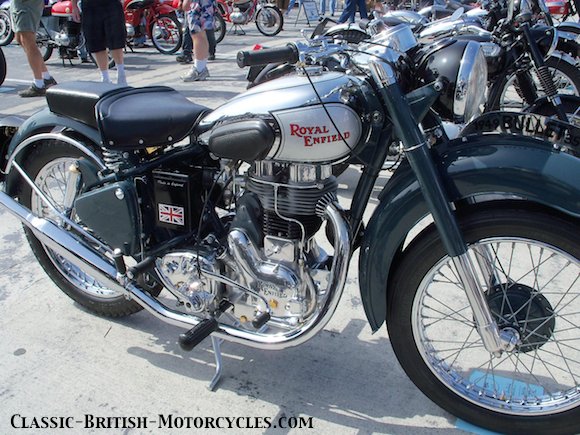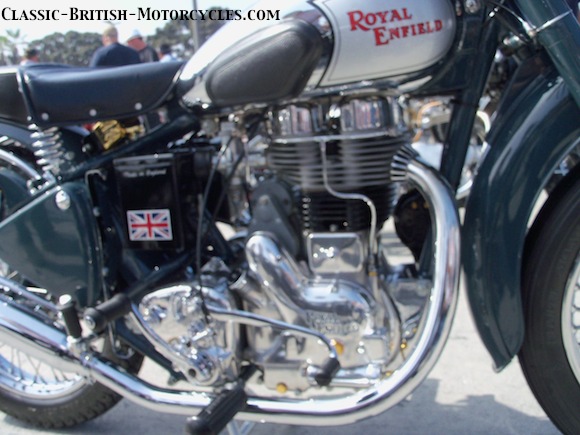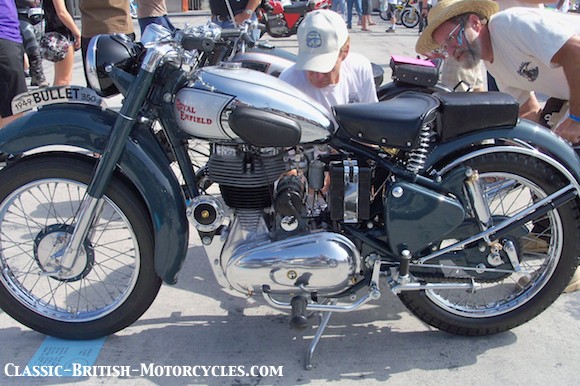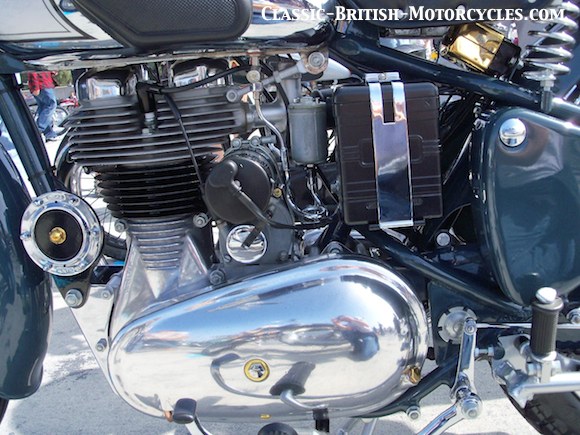1949 Royal Enfield Bullet
1949 ROYAL ENFIELD BULLET BACKGROUND
Royal Enfield had been building sturdy, reliable motorcycles since the turn of the century. They produced military motorcycles for the British army in both world wars. They struggled at the edge of insolvency throughout most of the 1930s but managed to hang on until the the second world war boosted their business again. After the war, they quickly settled back into civilian motorcycle production with their 350cc Model G, and 500cc Model J, both singles. The “Bullet” name was first used in 1931 and the fun never stopped. They used rigid frames and telescopic front forks. A new swing arm frame was adopted in 1948. It took a year for it to appear in the new 1949 Royal Enfield Bullet 350, and shortly after, in the Bullet 500.




1949 Royal Enfield Bullet SPECIFICATONS
|
Engine type Displacement Bore & Stroke Compression Carburetor Ignition Engine output Primary drive Clutch Gearbox Final drive Frame Suspension, F Suspension, R Brake, F Brake, R Wheel size, F Wheel size, R Wheelbase Grd clearance Length Width Height Fuel cap Weight |
350 Bullet Air-cooled OHV single 346cc 70mm X 90mm 6.5:1 Amal Magneto 20 bhp Chain Multi-plate, wet 4-speed, right-shift Chain Welded steel Telescopic fork Swing arm, 2 shocks 6″ SLS drum 6″ SLS drum 19″ 19″ 1370 mm 135 mm 2140 mm 800 mm 1030 mm 13.5L 180 kg |
500 Bullet Air-cooled OHV single 499cc 84mm X 90mm 7.5:1 Amal Magneto Chain Multi-plate, wet 4-speed, right-shift Chain Welded steel Telescopic fork Swing arm, 2 shocks 6″ SLS drum 6″ SLS drum 19″ 19″ 1370 mm 135 mm 2140 mm 800 mm 1030 mm 13.5L 184 kg |



No Comment